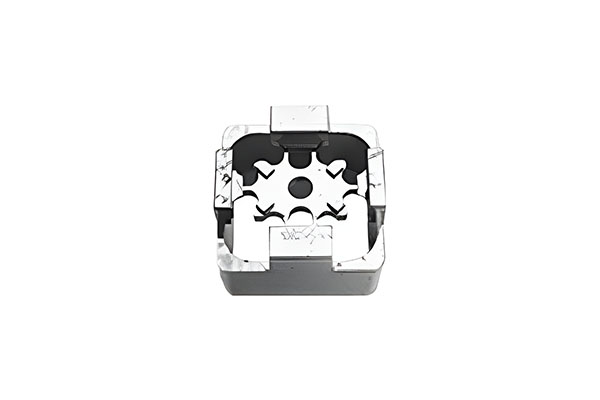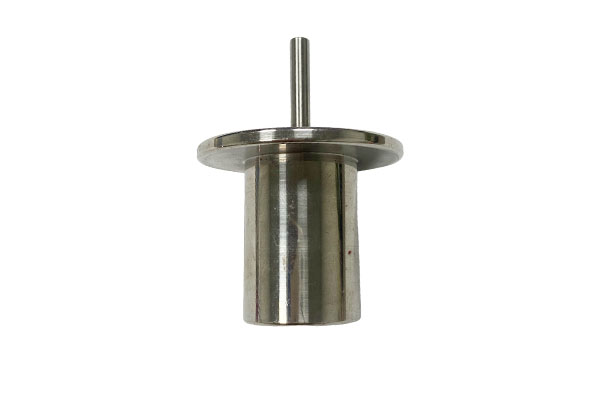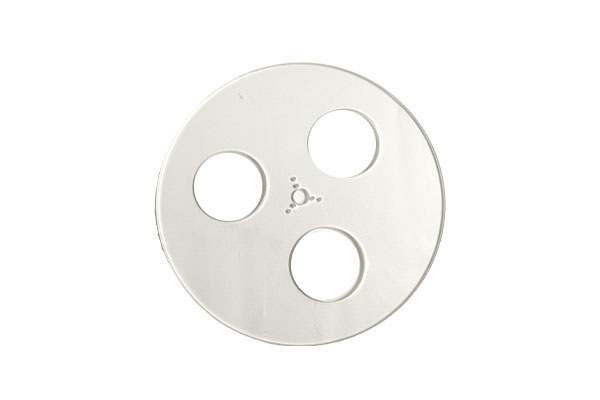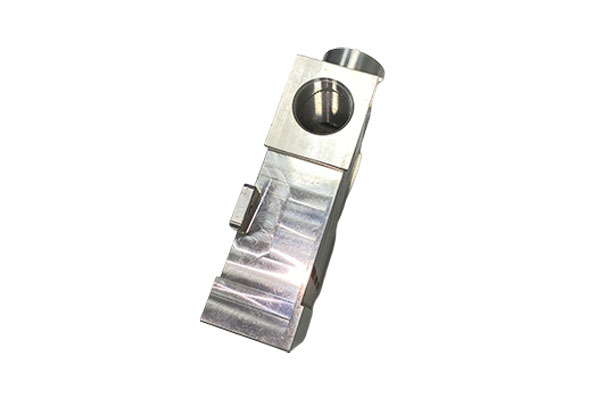How does hardware insulation parts processing achieve "conductor isolation" within metal structures to ensure the electrical safety of high-voltage equipment?
Release Time : 2025-10-14
In high-voltage electrical applications such as power systems, industrial equipment, new energy vehicles, and rail transit, metal structural components are widely used for support, connection, and electrical conduction. However, when multiple live parts or live parts coexist with the equipment casing, lack of effective isolation can easily lead to serious accidents such as short circuits, arc discharges, leakage, and even fire. In this context, hardware insulation parts processing, as a key electrical protection component, undertakes the core task of achieving "conductor isolation" within metallic environments, becoming the "invisible guardian" that ensures the safe operation of high-voltage equipment.
1. Functional Positioning: Building an Insulation Barrier Between Conductors
The essence of hardware insulation parts processing is to combine conductive metal and insulating materials through precision craftsmanship to form a composite structure that combines mechanical strength and electrical isolation. It typically consists of a metal insert as the core, coated with a high-performance engineering plastic such as nylon, polybutylene terephthalate, or polyphenylene sulfide. These materials possess extremely high volume resistivity, dielectric strength, and arc resistance, effectively blocking current paths in high-voltage environments and preventing accidental contact between conductors at different potentials.
2. Structural Design: Scientifically Designing Creepage and Clearance Distances
Effective isolation relies not only on the material's insulation properties but also on appropriate structural design. Insulation parts processing must meet specific creepage and clearance requirements. Hardware insulation parts processing uses extended insulation sheaths, sheds, or grooves to artificially extend the surface leakage path, preventing surface flashover in humid and dusty environments. Furthermore, its geometry ensures sufficient air distance between live metal parts and the grounding body to prevent breakdown.
3. Precision Machining: Ensuring Insulation Integrity
The reliability of insulation performance depends on machining quality. Insert molding is the primary manufacturing process for hardware insulation parts processing. Under high temperature and pressure, molten plastic completely encapsulates the metal insert. Upon cooling, a tight bond is formed, eliminating defects such as pores, cracks, and delamination. Before injection molding, the metal parts are cleaned, sandblasted, or electroplated to improve adhesion to the plastic. Mold design requires precise control of flow channels, venting, and cooling systems to ensure uniform plastic filling and avoid stress concentration that can lead to cracking later in life. High-quality injection molding ensures uniform insulation thickness, no weak spots, and long-term resistance to peeling and aging.
4. Material Selection: Coping with Complex Operating Conditions
High-voltage equipment often operates in environments with high temperatures, high humidity, oil pollution, and high vibration. The engineering plastics used in hardware insulation parts processing not only offer excellent insulation properties but also possess heat resistance, flame retardancy, UV resistance, and chemical corrosion resistance. Some products are reinforced with glass fiber to enhance mechanical strength, ensuring resistance to deformation under long-term stress and maintaining stable insulation performance.
Hardware insulation parts processing, through its "metal + insulation material" composite structure, precisely isolates conductors within the metal frame of high-voltage equipment, making it an essential component of electrical safety systems. It not only prevents short circuits and leakage risks but also improves equipment reliability and maintainability. As electrical systems develop towards higher voltage and higher density, the design, material and process requirements for hardware insulation parts processing will continue to increase, driving their evolution towards being smarter, more reliable and more integrated.
1. Functional Positioning: Building an Insulation Barrier Between Conductors
The essence of hardware insulation parts processing is to combine conductive metal and insulating materials through precision craftsmanship to form a composite structure that combines mechanical strength and electrical isolation. It typically consists of a metal insert as the core, coated with a high-performance engineering plastic such as nylon, polybutylene terephthalate, or polyphenylene sulfide. These materials possess extremely high volume resistivity, dielectric strength, and arc resistance, effectively blocking current paths in high-voltage environments and preventing accidental contact between conductors at different potentials.
2. Structural Design: Scientifically Designing Creepage and Clearance Distances
Effective isolation relies not only on the material's insulation properties but also on appropriate structural design. Insulation parts processing must meet specific creepage and clearance requirements. Hardware insulation parts processing uses extended insulation sheaths, sheds, or grooves to artificially extend the surface leakage path, preventing surface flashover in humid and dusty environments. Furthermore, its geometry ensures sufficient air distance between live metal parts and the grounding body to prevent breakdown.
3. Precision Machining: Ensuring Insulation Integrity
The reliability of insulation performance depends on machining quality. Insert molding is the primary manufacturing process for hardware insulation parts processing. Under high temperature and pressure, molten plastic completely encapsulates the metal insert. Upon cooling, a tight bond is formed, eliminating defects such as pores, cracks, and delamination. Before injection molding, the metal parts are cleaned, sandblasted, or electroplated to improve adhesion to the plastic. Mold design requires precise control of flow channels, venting, and cooling systems to ensure uniform plastic filling and avoid stress concentration that can lead to cracking later in life. High-quality injection molding ensures uniform insulation thickness, no weak spots, and long-term resistance to peeling and aging.
4. Material Selection: Coping with Complex Operating Conditions
High-voltage equipment often operates in environments with high temperatures, high humidity, oil pollution, and high vibration. The engineering plastics used in hardware insulation parts processing not only offer excellent insulation properties but also possess heat resistance, flame retardancy, UV resistance, and chemical corrosion resistance. Some products are reinforced with glass fiber to enhance mechanical strength, ensuring resistance to deformation under long-term stress and maintaining stable insulation performance.
Hardware insulation parts processing, through its "metal + insulation material" composite structure, precisely isolates conductors within the metal frame of high-voltage equipment, making it an essential component of electrical safety systems. It not only prevents short circuits and leakage risks but also improves equipment reliability and maintainability. As electrical systems develop towards higher voltage and higher density, the design, material and process requirements for hardware insulation parts processing will continue to increase, driving their evolution towards being smarter, more reliable and more integrated.







